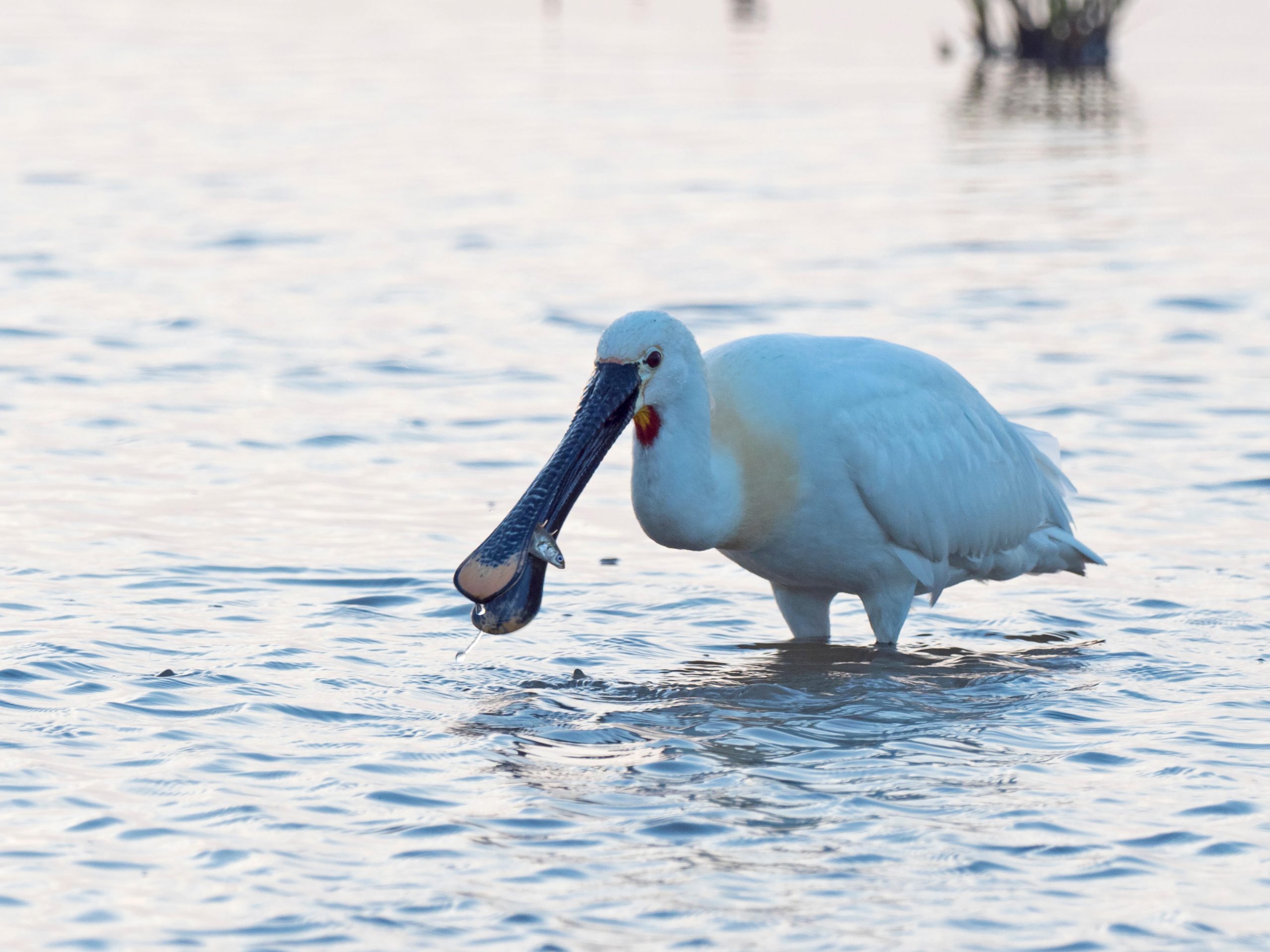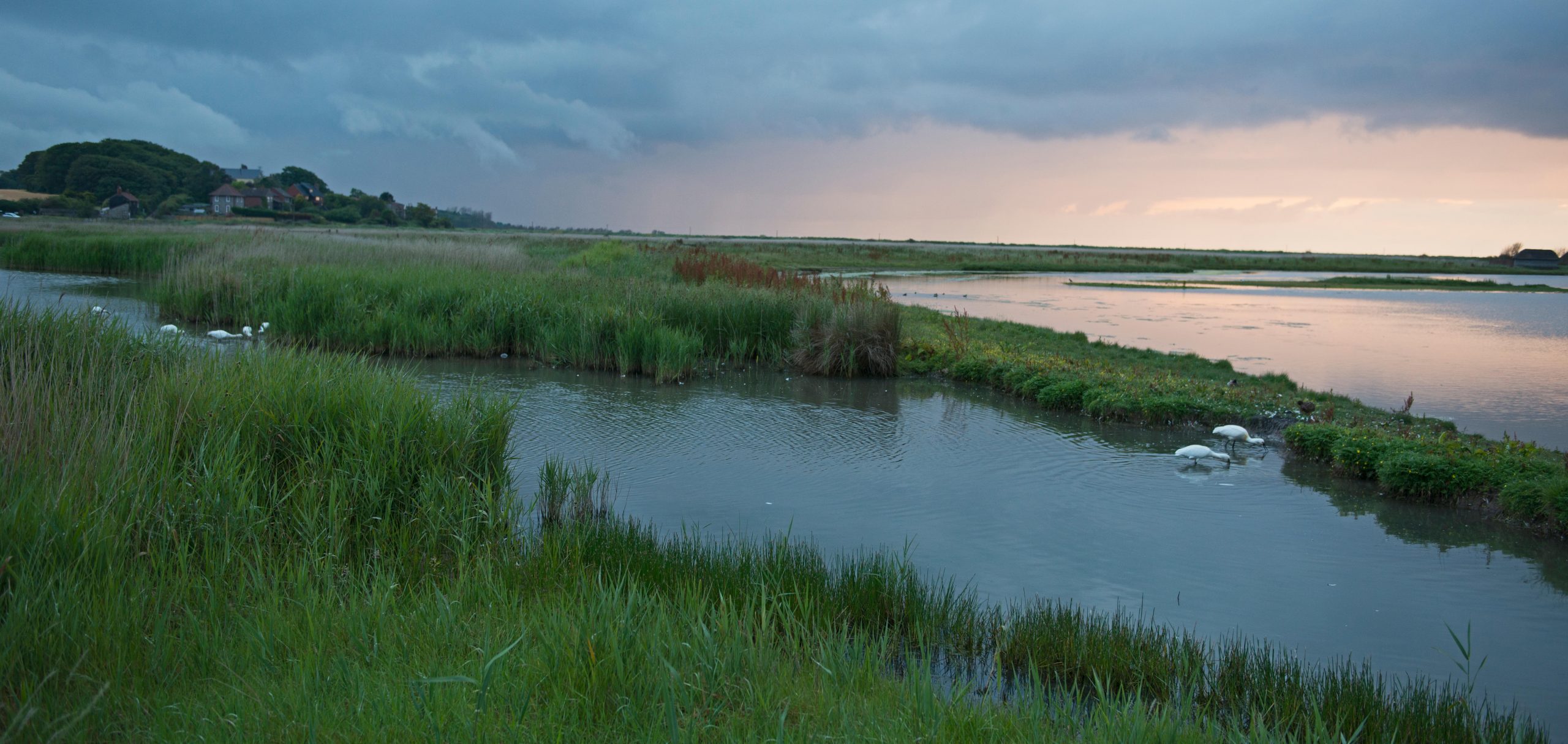Tracking the Norfolk spoonbills: 'We’ve hardly walked a mile before a string of three white birds flies towards us'
Fiona Reynolds visits the wilds of Norfolk to find spoonbills — and discovers a remarkable conservation success story.


‘I want to see spoonbills’ is my rather pathetic request of my friend, a charismatic leader of Nature recovery on the north Norfolk coast. I’ve heard that these beautiful, intriguing birds with their long, spoon-shaped bills are beginning to breed on our coastal wetlands, as egrets have done in recent decades. But although egrets are increasingly familiar, even in inland Cambridge, I’ve never seen a spoonbill and it’s become an itch that asks to be scratched.
Sighing, my friend generously offers a walk and I jump at it. It’s been a long time since I visited these marshes, first as a student, when a field trip to Scolt Head Island left me covered in mud from head to toe; later with the National Trust, learning about coastal management at Brancaster and Blakeney Point.
Now, I’m on the Holkham estate, where its huge nature reserve is undergoing a creative transformation, from a 20th-century focus on protecting particular species through prescriptive management to a 21st-century vision for Nature recovery: a systems-based approach built on healthy land, air and water.
It’s exhilarating to be out on the marshes, although the heat has given way to grey drizzle. There’s an endless expanse of sky and mudflats, the air filled with the cries of lapwing, redshank, oystercatcher and avocet. It’s a musical symphony for which my friend is the expert interpreter. We’ve hardly walked a mile before a string of three white birds flies towards us, landing to forage on the muddy banks of a creek. ‘Spoonbills!’ Binoculars raised, I watch entranced as they search for food, their bills beautifully efficient for the task.

My itch scratched, we begin the serious purpose of understanding the marshes and the conservation task they represent. These coastal flats are a rich UK habitat, immensely rich in species, vital for migrating birds (the pink-footed goose is a special visitor here in winter) and a huge carbon bank for the nation. Most of this coast is in conservation ownership: the National Trust, RSPB, Norfolk Wildlife Trust and Holkham working together to create a system that’s as stable as possible in a world rocked by climate change.
The first leg of our walk around Norton Marsh has already shown me it’s not one iconic species, but many that need to thrive to create a functioning, sustainable habitat. More than that, the cattle peacefully grazing remind me that the marshes were originally reclaimed for farming and are, in their own way, as modified a landscape as inland farms. The marshes’ future depends on sustainable farming as part of the mix.
As we walk through Burnham Overy Staithe towards the sea, I hear more about the challenges. Common rights are an important part of this landscape’s history, but whereas some — for samphire collection, for example — are barely used, those for wildfowling are intensely sought after. Can we reconcile shooting and conservation? We have to.
Exquisite houses, the beauty of Nature, and how to get the most from your life, straight to your inbox.
We walk along the Norfolk Coastal Path, passing ponds where the natterjack toad breeds and there are swathes of purple southern marsh orchid, which I’ve never seen in such abundance. Further along the beach we enter Holkham’s pinewoods, a magical place with soaring 200-year-old trees, where thinning is bringing in light and greater species diversity. Foxgloves and honeysuckle abound, their rich scents filling the air. Soon, off our path, we spot the gnarled trees where cormorants and spoonbills nest in their masses; a real sign of hope for the future.
Finally we turn inland and walk back along farmland paths, reflecting on what we’ve seen. Careful management of water levels, close observation of species’ reaction to different conditions and a generous, collaborative approach is already yielding results. I completely understand that it’s less of ‘I want to see a spoonbill’ and more of ‘make a wonderful habitat and spoonbills, and much else, will come’ that is the recipe for success.
Fiona Reynolds is Master of Emmanuel College, Cambridge, and author of ‘The Fight for Beauty’
Fiona Reynolds is chair of the Food, Farming and Countryside Commission, the former director-general of the National Trust, former Master of Emmanuel College, Cambridge, and the author of The Fight for Beauty. Follow her on Twitter @fionacreynolds.
